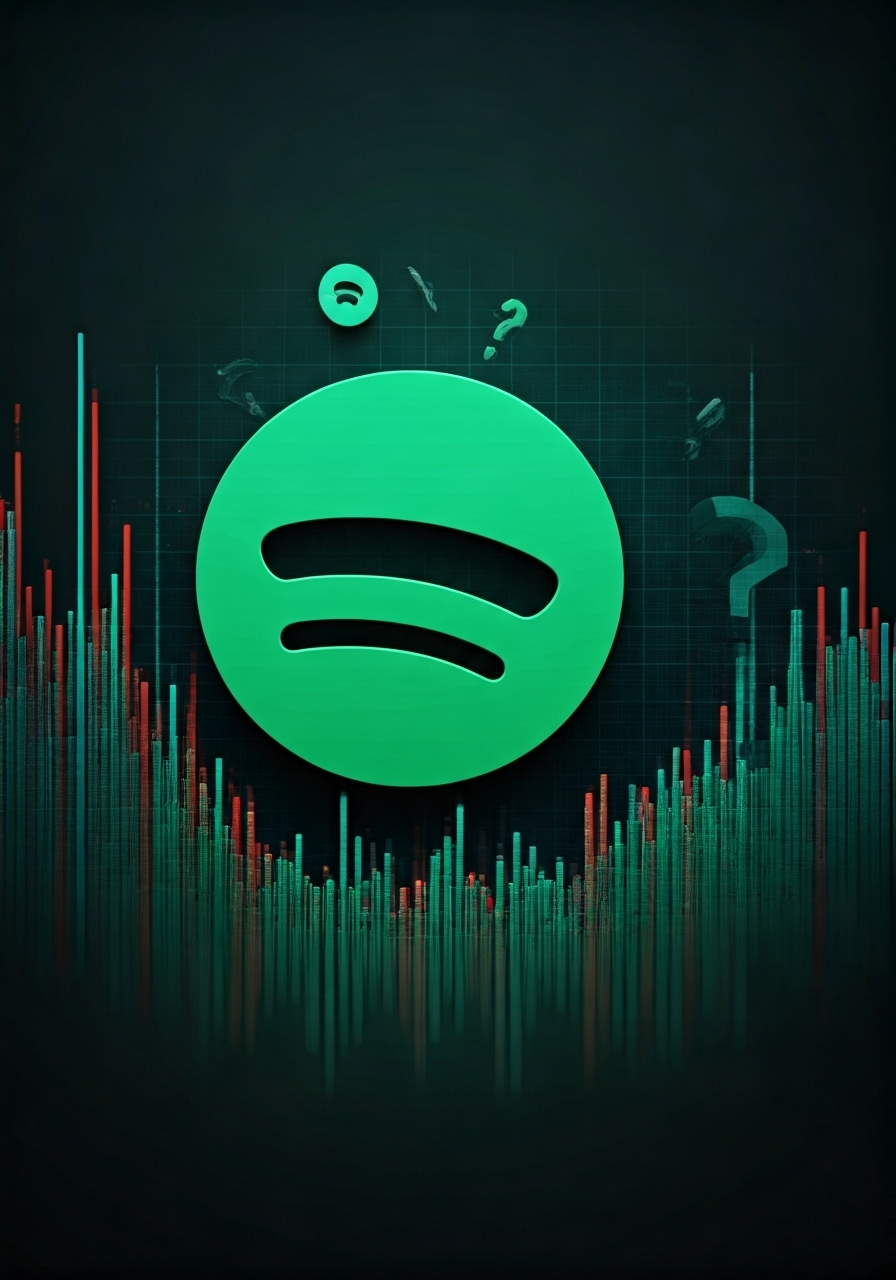Key Highlights
- Spotify reported a Q2 revenue of €4.19 billion, falling short of Wall Street’s estimated €4.26 billion.
- The platform saw an 11% rise in monthly active users, reaching 696 million, and a 12% growth in paying subscribers to 276 million.
- Despite increasing Spotify Premium subscribers, the company posted a net loss of €86 million.
- Advertising revenue dropped 1%, highlighting challenges in the ad-supported segment.
- CEO Daniel Ek reaffirmed confidence in long-term goals, despite lower-than-expected earnings.
- New tools such as AI DJ and audiobook expansion helped drive higher user engagement.
Introduction
Spotify’s Q2 results provided a sobering moment for investors. While user and subscriber growth remained strong, the company underperformed financially, missing both revenue and earnings expectations. The stock plummeted 11%—its worst trading day in two years—after Spotify issued soft guidance for Q3. Despite positive signs in user engagement, CEO Daniel Ek described the situation as an “execution challenge,” not a strategy failure. With ad revenues slipping and foreign exchange pressures mounting, Spotify faces a critical moment in its evolution.
Overview of Spotify’s Q2 Financial Performance

Spotify reported €4.19 billion in Q2 revenue, a 10% increase from last year but below analyst expectations. It posted a net loss of €86 million, or €0.42 per share, a significant reversal from its €225 million profit in Q2 2024.
The disappointing numbers were primarily due to higher operating expenses, including €115 million in social charges, personnel expansion, and expanded marketing efforts. Spotify’s guidance for the next quarter also fell flat, dampening investor sentiment and triggering a double-digit stock decline.Key Figures and Major Highlights from Q2
Comparison with Previous Quarters
User metrics continue to trend upward, but the financial divergence is stark. The 5 million increase in Premium users and 11% MAU growth did not translate into profit. Ad revenue, which held stable in previous quarters, declined 1%—a troubling sign given Spotify’s ad monetization ambitions.
Reasons Behind Spotify Q2 Loss

Increased Operating Expenses
Spotify’s continued investments in staff, marketing, and new product rollouts significantly raised its cost base:
- €115 million in stock-related social costs
- Rising costs in professional services and licensing
- Large-scale promotion of podcasts and AI tools
Impact of Currency Fluctuations
Spotify cited a 490-basis-point headwind from foreign exchange rates, slicing around €104 million from reported revenue. As a global company, currency instability in emerging markets continues to challenge profitability.
Spotify User Growth Metrics in Q2
Despite financial setbacks, Spotify’s user base hit a record high:
- MAUs: 696 million
- Premium Subscribers: 276 million
- Ad-Supported Users: Over 60% of total base
Spotify’s strategy to expand through free tiers, AI tools, and audiobook offerings is clearly working from a user acquisition standpoint.
Premium vs. Ad-Supported Subscriber Trends
| Subscriber Type | Growth | Revenue Contribution |
|---|---|---|
| Premium | +12% (276M users) | Over 80% of total revenue |
| Ad-Supported | Flat revenue (-1%) | High user base, low yield |
Premium plans (especially family bundles) continue to outperform, while monetization of free users lags—a concern Spotify is trying to address with AI-driven ad tech.
Revenue Streams and Their Performance
Subscription Revenue
Spotify’s core strength remains in its Premium subscriptions, offering:
- Ad-free experiences
- Personalized playlists
- Exclusive content and audiobooks
Family and duo plans are critical retention tools.
Advertising Revenue
Despite a large free-tier audience, ad revenue slipped. Spotify’s programmatic ad stack and automated ad tools show promise, but growth has not yet materialized. CEO Ek acknowledged this is “an execution challenge.”




